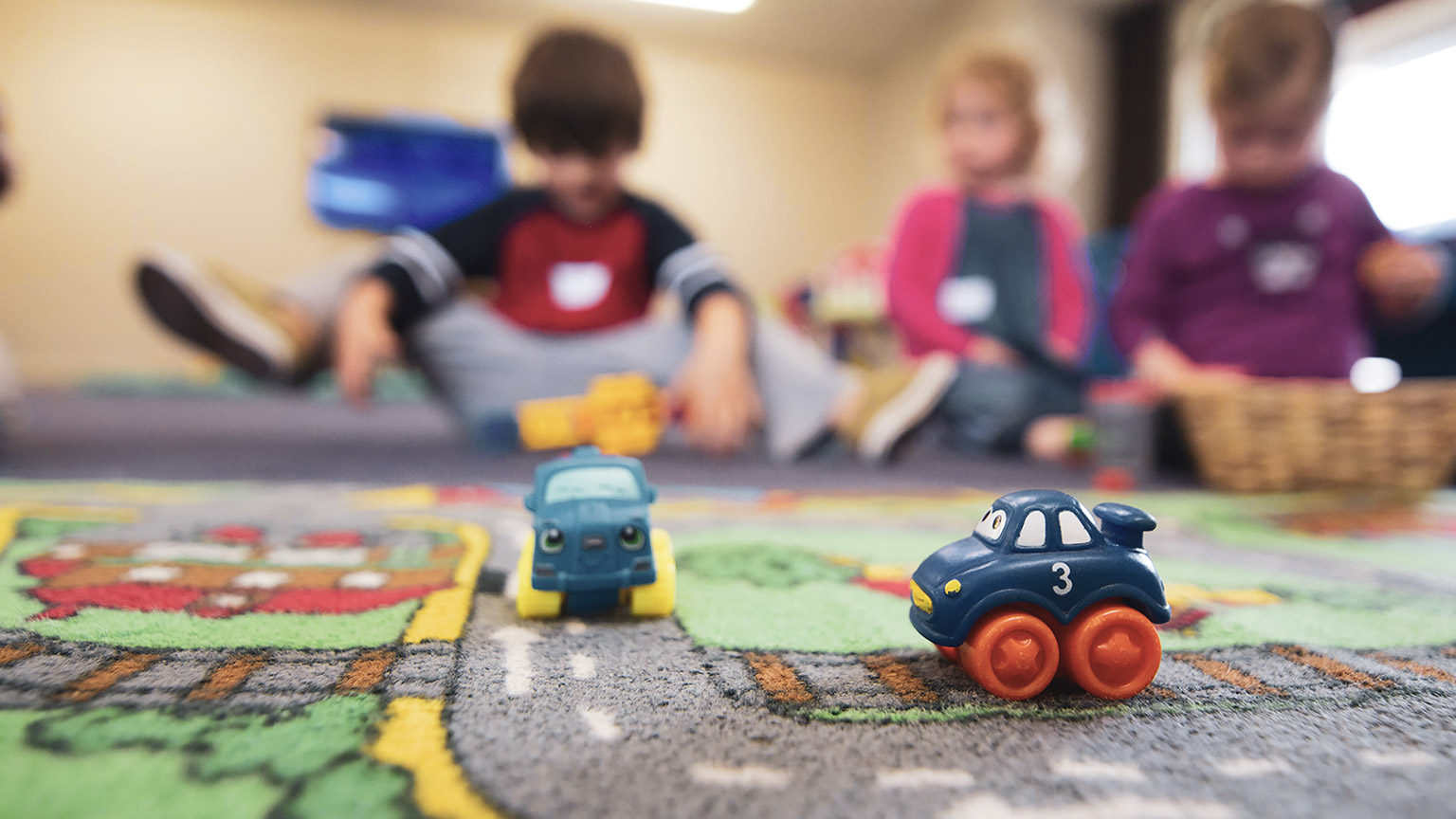This topic focuses on the laws and regulations an early childhood service must comply with to ensure a healthy and safe environment for all children. Building the learners' confidence in accessing and implementing relevant documents such as National Quality Framework, National Education and Care Law and Regulations.
By the end of this topic, you will understand the following:
- The most significant laws and regulations that govern Early Childhood Education and Care (ECEC) services in Australian states and territories
- The requirements for children’s health and safety are contained in the National Quality Standard
- How and why policies and procedures relating to health and safety are developed and used in the ECEC workplace.
The Health and safety of children is the primary concern of early childhood service providers.

Health and safety are the concerns of every person who enters a workplace. Some of the most significant legislation and government sources of information in the area of the health and safety of children include:
- National Education and Care Law and Regulations.
- ECEC industry standards and funding requirements, including the National Quality Standard – Quality Area 2
- Codes of Ethics for workers in ECEC environments.
- Local council by-laws, such as those that concern parking and pick-up zones, building codes and food safety
- Updates in best practice by government-funded authorities such as The Cancer Council and Asthma Australia
Early Childhood Education and Care (ECEC) Legislation
The ECEC industry also has legislation relating to health and safety issues. The most important are the Education and Care Services National Law Act 2010 and the National Regulations (2015).
This legislation contains important health and safety requirements such as managing illness and allergies in children, legal requirements for performing particular tasks, and the different roles and responsibilities of workers trained at different levels. Failing to meet legislation, such as neglecting to protect children from foreseeable harm, can result in fines and prosecution.
Example
The National Regulations include over 400 aspects that apply to ECEC workplaces. They are written in a way that is easy for all workers to access, follow and understand and include penalties for non-compliance.
Here is an example of how the regulations are laid out in the NSW Government, Education and Care Services National Regulations (2011 SI 653)1:
77. Health, hygiene and safe food practices (1) The approved provider of an education and care service must ensure that nominated supervisors and staff members of, and volunteers at, the service implement—
- adequate health and hygiene practices; and
- safe practices for handling, preparing and storing food—to minimise risks to children being educated and cared for by the service.
- Penalty: $2000.
Think
Read this information from the NSW Government and see how many regulations you can note that relate to children’s health and safety.
Case Study – Lilliane

Liliane is an educator in an Early Learning Centre. Her state regulatory authority has just assessed her service against the seven quality areas of the National Quality Standard.
The service was given a rating for each of the seven quality areas and an overall rating based on these results. Six quality areas received the rating ‘Exceeding National Quality Standard’. However, for Quality Area 2: Children’s Health and Safety, they received a rating ‘Working Towards National Standard’. This means that it has been identified as an area requiring improvement.
While the educators were disappointed with this result in Quality Area 2, they understood why this result occurred. The feedback from the visiting assessors included comments such as:
Children were reminded to wash their hands after they had been to the toilet and before they were given their meals but were not adequately supervised to ensure that this was carried out thoroughly.
An educator in the Babies room was seen holding the bottle teat in her mouth while she carried the baby to a chair before proceeding to give the baby the bottle.
A child appeared to be showing signs of a severe infectious respiratory illness, and the educators helped the child to use tissues throughout the day. Still, they did not attempt to contact the child’s parents/ guardian and have the child taken home.
The service must display these ratings where it is visible at all times, and it must show that they are working towards improvement in these safety considerations. The quality ratings are also published on the national registers and official websites designed to help parents/guardians locate a suitable service for their child. These quality ratings can help families choose the right service for their child.
The Health and Safety Authority in your State or Territory
Visit the website of Safe Work Australia: https://www.safeworkaustralia.gov.au/law-and-regulation about state and territory health and safety authorities, and answer the following questions:
- How does the authority work towards keeping workplaces safe?
- What information does your authority provide specific to the ECEC industry?
- What help could this authority provide to your own service?
- Under what circumstances is it compulsory for your service to contact this authority?
Ensure that you keep notes for future reference, as this information will support your assessment and professional practice.
A standard differs from legislation in that you are not necessarily criminally negligent if you breach its requirements, except where the standard intersects with the law. The industry sets a standard to provide a minimum list of requirements that all children’s services in Australia must meet.
The standard is linked to funding and accreditation. Failing to meet the standard can lead to your service:
- receiving a compliance notice to improve
- being fined and disciplinary action being taken by a
- tribunal hearing
- being subject to sanctions on the types of services it
- is allowed to offer
- the closure of the service, in extreme cases.
The National Quality Standard
In the ECEC industry, you must comply with all areas of the National Quality Standard (NQS)2. Two quality areas of the NQS relate specifically to health and safety.
The table below outlines these areas.
| Quality Area | Element | Requirement |
|---|---|---|
| Quality Area 2: Children’s Health and Safety | Element 2.1.2: Health practices and procedures | Effective illness and injury management and hygiene |
| Element 2.2.1: Supervision | Supervision At all times, reasonable precautions and adequate supervision | |
| Element 2.2.2: Incident and emergency management | Plans to effectively manage incidents and emergencies are developed in consultation with relevant authorities, practised and implemented | |
| Quality Area 7: Governance and Leadership | Element 7.1.2: Management Systems | Systems are in place to manage risk and enable the effective management and operation of a quality service. |
| Element 7.1.3: Roles and responsibilities | Roles and responsibilities are clearly defined, and understood, and support effective decision-making and operation of the service. |
Copyright (State of New South Wales) Creative Commons Attribution 4.0 International licence (CC BY 4.0).
Website
Read more about The National Quality Standard and its accompanying resources.
Assessment of Health and Safety
Listen to the ACECQA e-learning podcast ‘Assessment’ about what to expect from a visit from an assessor, including requirements for Quality Area 2: Children’s Health and Safety and then answer the following questions:
- Give some examples of health and safety requirements that can be self-assessed by your service
- What are two of the most important ongoing health and safety quality improvement processes that should be continually reviewed and improved?
Ensure that you keep notes for future reference, as this information will support your assessment and professional practice.
Each workplace will have its own unique set of policies and procedures. Policies are generally written by a committee of staff members, parents/guardians and management or by the service director and management team. They must be easily available to staff, easy to follow and comprehensive enough to provide staff with adequate guidance in following legislation.
A policy can take different forms, but you might commonly see a structure that includes the following information:
| Policy Section | What it Contains |
|---|---|
| Policy Statement | One or two paragraphs that summarise the service’s requirements relating to the subject of the policy. |
| Purpose | This outlines why the policy is required and includes the broad aim of the policy, such as the safety of children. |
| Scope | The scope refers to the work roles which hold responsibilities under the policy and to who it applies. |
| Procedures |
Procedures are the most detailed part of the policy. They include a list of steps that must be followed to adhere to the policy. The procedures will often be very specific to your workplace or the type of children’s service where you work. Examples of procedures might include:
|
| Links and Resources |
This section provides links or lists of resources for further information to help you understand the policy's source and seek further information. |
| Review Details | The policy must include a scheduled date for review and details of the modifications made during recent reviews. |
Resource
Refer to your Little.ly policy HS21 Hazard Management to see a sample policy and procedure.
At a minimum, your service must, by law, have policies and procedures that comply with the NQS and National Regulations in the following areas relating to health and safety:
- Food safety
- Sun protection
- Water safety
- First aid administration
- Incident, injury, trauma and illness
- Infectious diseases
- Medical conditions in children
- Emergency and evacuation
- Delivery and collection of children
- Excursions and transportation
- Providing a child safe environment.
Website
The Little.ly website contains many examples of these policies. We will use many of them in this resource, and it will be helpful for you to refer to them as you work through this unit.
Roles and Responsibilities
Everyone working in early childhood and care services is responsible for ensuring the service is safe and healthy for children. The service will promote the health, safety and well-being of all children attending the program.
Responsibilities of the Approve Provider, Nominated Supervisor and Responsible Person
The approved provider is the legal entity with ultimate legal responsibility for the service. Ensure a responsible person or a nominated supervisor is present at the service. They are responsible for health and safety, staffing and documentation. They will instruct and support the nominated supervisor/responsible person. They are responsible for ensuring that the buildings and equipment are safe for children. They must ensure that cots and other equipment meet the Australian Safety Standards and that indoor and outdoor areas are secure and free from foreseeable hazards and health risks to children.
Approved providers must ensure that training for staff, such as first aid and anaphylaxis, is up to date, as this is compulsory according to law. They must also report certain incidents to the state or territory safety authority.
The nominated supervisor oversees the management of the service. They are responsible for effectively supervising and managing an education and care service. They will ensure that the service policies, practices and procedures are implemented. They ensure adequate supervision of children, manage children’s health, hygiene and safe food practices, and the safe administration of medicine. The nominated supervisor supports the person responsible and the leaders. They consult with others and remind others of procedures.
The responsible person has the day-to-day charge of the service. They must attend the premises daily (if the nominated supervisor is absent). They know the National Child Safe Standards and oversee health and safety practices for children, such as providing healthy food and drinks. Provides direction and support to staff to keep children safe and healthy. They have the same legal responsibilities as a general educator.
Responsibilities of Educators
Educators in early childhood education and care services play an important part in ensuring children's safety. Educators will provide adequate supervision, manage illness and injury and ensure good hygiene practices. They will ensure children have their needs met for sleep and rest. Educators will report incidents, injuries and suspected abuse and take reasonable measures to protect children from harm and hazards.
The Coordinator or Director of the service is responsible for identifying and assessing risks to the health and safety of children and implementing controls to reduce or eliminate these risks. They oversee the safety risk management program, including developing policies, consultation, staff training, hazard identification and assessment, child protection and incident and emergency management.
Resource
To find out more about the roles and responsibilities in a children’s education service, read: Who’s who at our service from SNAICC and Education NSW: https://education.nsw.gov.au/content/dam/main-education/en/home/early-childhood-education/operating-an-early-childhood-education-service0/Whos-who-at-our-Service.PDF
Watch
The following video from ACEQA (2013) gives an overview of Quality Area 2 - Children's health and safety and educator’s responsibilities:
Example
Sometimes it is not what you do but what you do not do that can constitute a breach of your responsibilities to the children under your care. A child may get injured if you do not provide adequate supervision or remove a hazard. Being too busy is not an excuse, as children’s well-being is your responsibility.
Service Ratings and Policy Improvement
If you are currently employed in an ECEC service, locate a copy of their most recent rating online or inside the service. If you are not employed, look up the rating of a service close to you on a website such as Child Care Finder.
Make sure that you keep notes for your future reference, as this information will support you in your assessment and professional practice.
- What were the final rating results?
- What feedback was given to the service?
- What policies could the service improve to strengthen areas for improvement?

